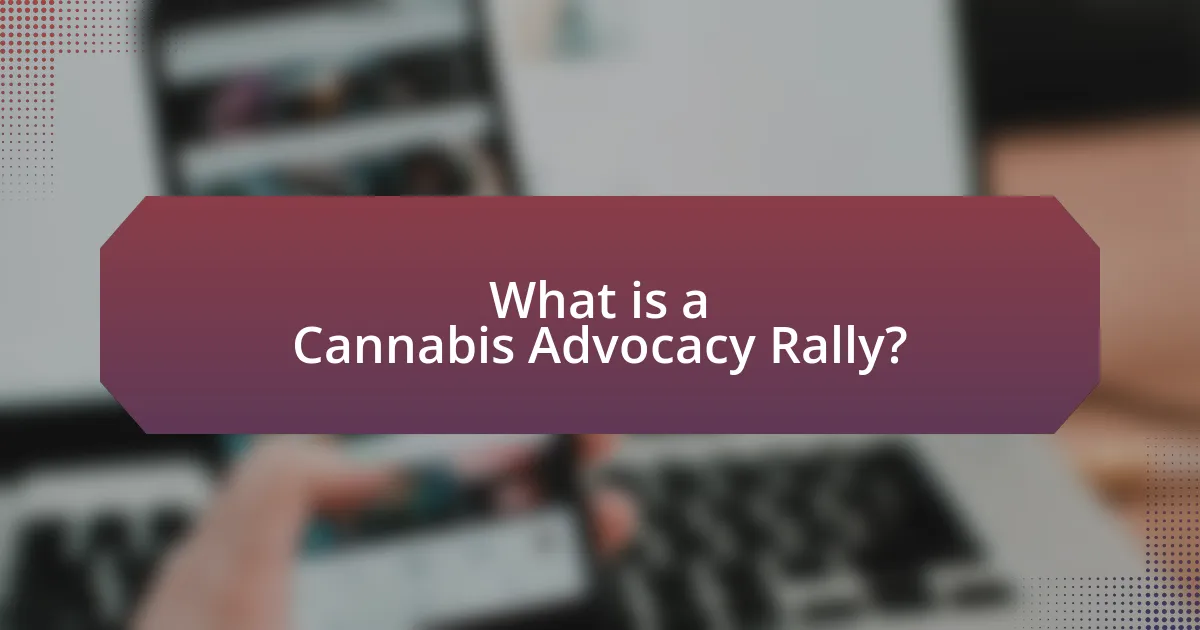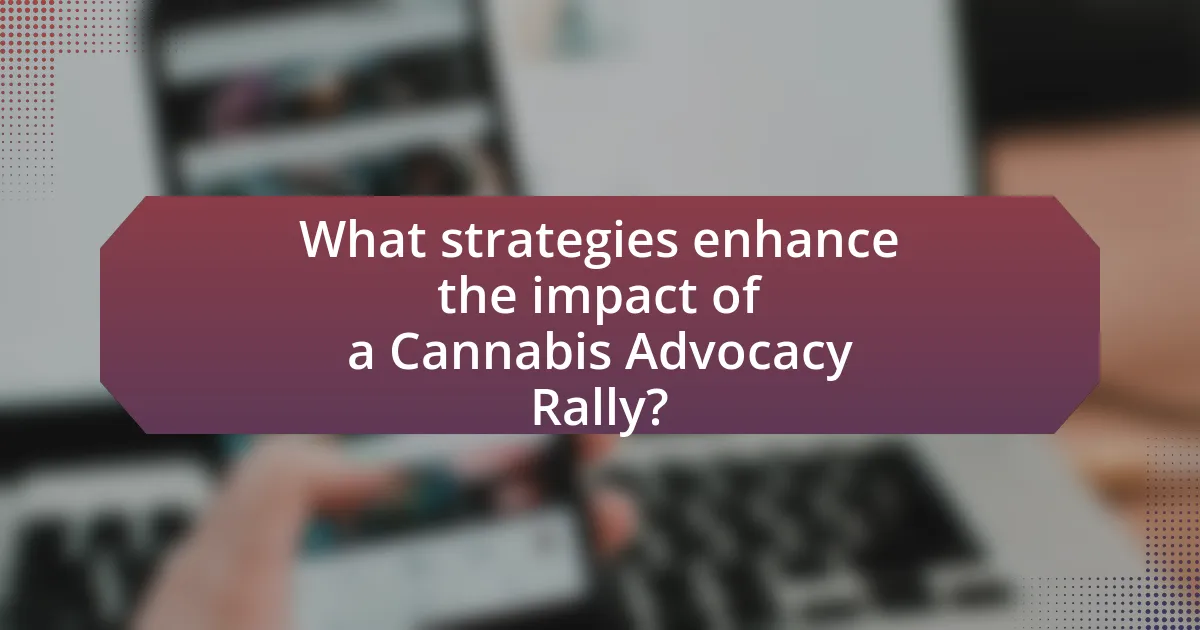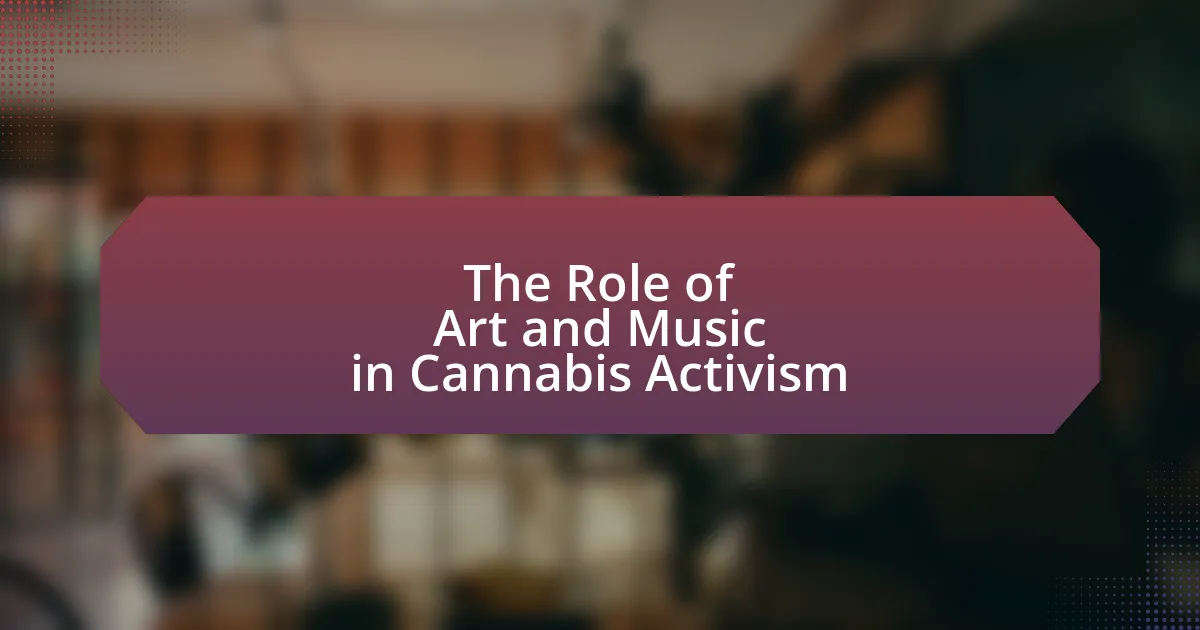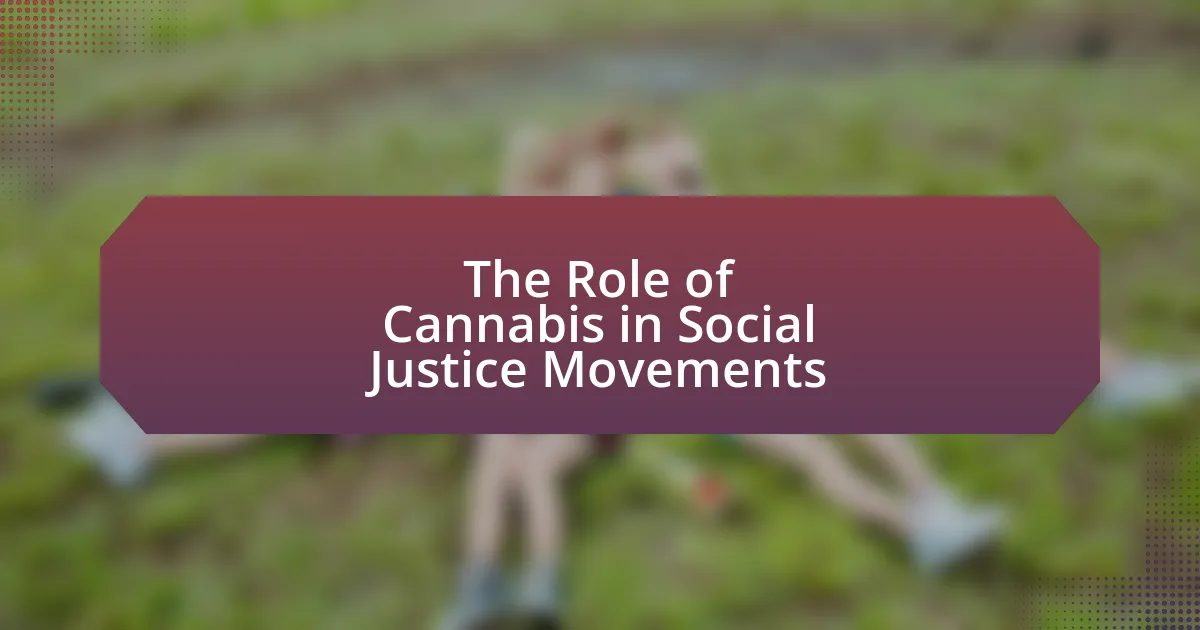A Cannabis Advocacy Rally is an organized event aimed at promoting the legalization and acceptance of cannabis through community engagement, education, and policy reform. This article outlines the importance of these rallies in shifting public perception and influencing legislation, detailing the historical context of cannabis criminalization and the role of activists in mobilizing support. It provides a comprehensive guide on planning a successful rally, including key objectives, logistical considerations, effective promotion strategies, and best practices for community engagement. Additionally, the article addresses common challenges faced during these events and offers insights on collecting feedback for future improvements.

What is a Cannabis Advocacy Rally?
A Cannabis Advocacy Rally is an organized event where individuals gather to promote the legalization and acceptance of cannabis. These rallies often feature speeches, educational materials, and community engagement activities aimed at raising awareness about cannabis-related issues, such as its medicinal benefits and the need for policy reform. Historically, such rallies have played a significant role in shifting public perception and influencing legislation, as seen in various states where cannabis laws have been reformed following public advocacy efforts.
Why are Cannabis Advocacy Rallies important?
Cannabis advocacy rallies are important because they raise awareness about cannabis-related issues and promote policy changes. These events mobilize communities, allowing individuals to express their support for legalization, decriminalization, and medical use, which can influence public opinion and legislative action. For instance, the National Organization for the Reform of Marijuana Laws (NORML) has documented that advocacy rallies have historically played a crucial role in shifting perceptions and laws surrounding cannabis in various states, leading to significant reforms such as the legalization of recreational use in states like Colorado and California.
What historical context supports the need for these rallies?
The historical context supporting the need for cannabis advocacy rallies includes the long-standing criminalization of cannabis, which began in the early 20th century with the Marihuana Tax Act of 1937, leading to widespread stigma and legal repercussions. This legislation was influenced by racial and political factors, as seen in the propaganda campaigns that associated cannabis with marginalized communities. Additionally, the War on Drugs initiated in the 1980s further entrenched punitive measures against cannabis users, resulting in significant social and economic disparities. These historical injustices have fueled the modern movement for legalization and reform, as advocates seek to rectify past wrongs and promote equitable policies.
How do these rallies impact public perception of cannabis?
Cannabis advocacy rallies significantly influence public perception by normalizing cannabis use and promoting awareness of its benefits. These events often attract diverse participants, including advocates, patients, and industry professionals, which helps to humanize the issue and dispel stereotypes. Research indicates that public demonstrations can lead to increased support for cannabis legalization; for instance, a study published in the Journal of Drug Policy Analysis found that states with higher visibility of cannabis rallies experienced a 10% increase in public support for legalization measures. This shift in perception is crucial as it can lead to changes in legislation and societal attitudes towards cannabis.
Who typically participates in Cannabis Advocacy Rallies?
Cannabis advocacy rallies typically see participation from a diverse group of individuals, including cannabis users, medical patients, activists, industry professionals, and community members advocating for legalization and reform. These participants often unite to promote awareness about cannabis-related issues, share personal stories, and push for legislative changes. For instance, a report from the National Organization for the Reform of Marijuana Laws (NORML) highlights that such rallies often attract thousands of attendees who are passionate about cannabis rights and reform.
What roles do activists play in these events?
Activists play crucial roles in cannabis advocacy rallies by organizing events, mobilizing supporters, and raising awareness about cannabis-related issues. They coordinate logistics, such as securing permits and arranging speakers, which are essential for the rally’s success. Additionally, activists engage with the community to educate the public on the benefits of cannabis legalization, often using data from studies that highlight economic and health advantages. For instance, a report from the National Organization for the Reform of Marijuana Laws indicates that states with legalized cannabis have seen significant tax revenue increases, which activists often cite to bolster their arguments. Through these actions, activists not only facilitate the rally but also amplify the message of cannabis reform, making them integral to the movement.
How can community members get involved?
Community members can get involved by participating in planning meetings, volunteering for event roles, and spreading awareness through social media. Engaging in planning meetings allows individuals to contribute ideas and resources, while volunteering for roles such as setup, registration, or outreach ensures the event runs smoothly. Additionally, sharing information about the rally on social media platforms can help reach a wider audience, increasing attendance and support for cannabis advocacy. Research indicates that community engagement in advocacy efforts can significantly enhance the effectiveness of campaigns, as seen in various successful grassroots movements.
What are the key objectives of hosting a Cannabis Advocacy Rally?
The key objectives of hosting a Cannabis Advocacy Rally include raising awareness about cannabis-related issues, promoting policy reform, and fostering community engagement. Raising awareness involves educating the public on the benefits and challenges of cannabis legalization, as evidenced by studies showing increased public support for legalization after advocacy efforts. Promoting policy reform aims to influence lawmakers to consider changes in cannabis legislation, supported by data indicating that organized rallies can lead to legislative discussions. Lastly, fostering community engagement encourages individuals to connect and collaborate on advocacy efforts, which has been shown to strengthen grassroots movements and enhance collective action.
How can these objectives be effectively communicated?
Objectives can be effectively communicated through clear messaging, targeted outreach, and engaging formats. Clear messaging involves articulating the objectives in simple, concise language that resonates with the audience, ensuring that key points are easily understood. Targeted outreach includes identifying and reaching specific demographics that align with the advocacy goals, utilizing social media platforms, email campaigns, and community events to disseminate information. Engaging formats, such as visual presentations, interactive discussions, and storytelling, can enhance understanding and retention of the objectives. Research indicates that effective communication strategies significantly increase audience engagement and support for advocacy initiatives, as demonstrated by studies showing that clear messaging can improve public perception and mobilization efforts in social movements.
What outcomes should organizers aim for?
Organizers should aim for increased awareness, community engagement, and policy change regarding cannabis advocacy. Increased awareness can be measured through media coverage and social media engagement metrics, which indicate the reach of the rally’s message. Community engagement is evidenced by the number of attendees, participation in discussions, and the formation of local advocacy groups post-event. Policy change can be tracked through legislative actions or shifts in public opinion polls following the rally, demonstrating the event’s impact on local or state cannabis laws.

How do you plan a successful Cannabis Advocacy Rally?
To plan a successful Cannabis Advocacy Rally, first establish clear objectives that outline the purpose of the rally, such as raising awareness, influencing legislation, or building community support. Next, select a strategic location that is accessible and relevant to the cause, ensuring it can accommodate the expected number of attendees.
Engage with local advocacy groups and stakeholders to build a coalition that can provide support and resources. Develop a comprehensive marketing strategy that includes social media promotion, flyers, and community outreach to attract participants.
Secure necessary permits and comply with local regulations to ensure the rally is legally sanctioned. Organize a schedule of speakers, performances, and activities that resonate with the audience, focusing on education and advocacy.
Finally, prepare for logistics such as sound equipment, signage, and volunteer coordination to ensure the event runs smoothly. Successful rallies have historically resulted in increased public support and legislative changes, as seen in various states that have legalized cannabis following organized advocacy efforts.
What are the essential steps in organizing the event?
The essential steps in organizing a cannabis advocacy rally include defining the event’s purpose, selecting a date and location, securing necessary permits, promoting the event, coordinating logistics, and engaging speakers and volunteers. Defining the event’s purpose ensures clarity in messaging and goals, while selecting a date and location involves considering accessibility and relevance to the audience. Securing permits is crucial for legal compliance, and promoting the event through social media and community outreach maximizes attendance. Coordinating logistics, such as sound equipment and seating arrangements, enhances the experience, and engaging speakers and volunteers fosters community involvement and expertise. Each of these steps is vital for a successful rally, as evidenced by numerous advocacy events that have effectively mobilized support and raised awareness.
How do you choose an appropriate location for the rally?
To choose an appropriate location for a rally, assess factors such as accessibility, visibility, and local regulations. Accessibility ensures that participants can easily reach the site, while visibility helps attract attention from passersby and media. Local regulations, including permits and noise ordinances, must be adhered to in order to avoid legal issues. For example, a location near public transportation and high foot traffic areas can enhance participation and engagement, as evidenced by successful rallies held in urban centers where these factors are prioritized.
What permits or legal considerations must be addressed?
To host a successful cannabis advocacy rally, organizers must secure necessary permits and comply with local regulations. This includes obtaining a special event permit from the local government, which often requires submitting an application detailing the event’s purpose, location, and expected attendance. Additionally, organizers must adhere to zoning laws that dictate where such events can occur, ensuring compliance with any restrictions related to cannabis activities. Failure to address these legal considerations can result in fines or event cancellation, as evidenced by various local ordinances that regulate public gatherings and cannabis-related activities.
How can you effectively promote the rally?
To effectively promote the rally, utilize social media platforms to create awareness and engage potential attendees. Research indicates that 79% of people are more likely to attend events promoted on social media, highlighting its effectiveness in reaching a broad audience. Additionally, collaborating with local influencers and advocacy groups can amplify the message, as partnerships often lead to increased visibility and credibility. Creating visually appealing promotional materials, such as flyers and videos, can also attract attention and encourage participation.
What channels are most effective for outreach?
Social media platforms, email marketing, and community events are the most effective channels for outreach in cannabis advocacy. Social media allows for targeted messaging and engagement with a broad audience, as evidenced by a 2021 study showing that 73% of activists use platforms like Facebook and Instagram to mobilize support. Email marketing enables direct communication with supporters, achieving an average open rate of 20% in advocacy campaigns. Community events foster personal connections and grassroots support, with research indicating that in-person interactions significantly increase participant commitment and advocacy effectiveness.
How can social media be leveraged for promotion?
Social media can be leveraged for promotion by creating targeted campaigns that engage specific audiences. Utilizing platforms like Facebook, Instagram, and Twitter allows organizations to share event details, updates, and relevant content that resonates with potential attendees. For instance, a study by the Pew Research Center indicates that 69% of adults in the U.S. use social media, making it an effective channel for reaching a broad demographic. Additionally, using hashtags related to cannabis advocacy can increase visibility and encourage community interaction, further amplifying the promotional efforts.
What logistical considerations should be taken into account?
Key logistical considerations for hosting a successful cannabis advocacy rally include securing necessary permits, selecting an accessible venue, arranging for sound and visual equipment, and ensuring adequate safety measures. Securing permits is essential to comply with local regulations, as failure to do so can result in fines or event cancellation. Choosing an accessible venue ensures participation from individuals with varying mobility needs, which is crucial for inclusivity. Arranging sound and visual equipment enhances communication and engagement during the rally, allowing speakers to reach a larger audience effectively. Implementing safety measures, such as crowd control and emergency services, is vital to protect attendees and ensure a smooth event.
How do you manage crowd control and safety measures?
To manage crowd control and safety measures at a cannabis advocacy rally, implement a comprehensive plan that includes designated entry and exit points, clear signage, and trained personnel to guide attendees. Establishing a crowd management team ensures that safety protocols are followed, while the use of barriers can help direct foot traffic and prevent overcrowding in specific areas. Historical data from large events indicates that effective crowd control reduces incidents; for example, the National Fire Protection Association recommends maintaining a minimum of 5 feet of space per person to ensure safety. Regular communication with local law enforcement can also enhance safety measures, as they can provide additional support and resources during the event.
What resources are needed for sound and visual equipment?
Sound and visual equipment for a cannabis advocacy rally requires microphones, speakers, projectors, screens, and audio-visual cables. Microphones are essential for amplifying speakers’ voices, while speakers ensure that the audience can hear clearly. Projectors and screens are necessary for displaying visual content, such as presentations or videos, to engage attendees. Audio-visual cables connect these devices, ensuring proper functionality. According to industry standards, having high-quality equipment enhances communication and audience engagement, which is crucial for the success of advocacy events.

What strategies enhance the impact of a Cannabis Advocacy Rally?
Effective strategies to enhance the impact of a Cannabis Advocacy Rally include mobilizing a diverse coalition of supporters, utilizing social media for outreach, and providing clear, actionable messaging. Mobilizing a diverse coalition ensures representation from various demographics, which can amplify the rally’s reach and influence. Social media platforms can be leveraged to create buzz, share event details, and engage with a broader audience, as evidenced by studies showing that social media campaigns can significantly increase event attendance and awareness. Clear messaging that outlines specific goals and calls to action helps attendees understand the purpose of the rally and encourages them to participate actively, thereby increasing the overall effectiveness of the advocacy efforts.
How can speakers and presentations be effectively organized?
Speakers and presentations can be effectively organized by establishing a clear agenda, assigning specific time slots for each speaker, and ensuring that topics are relevant to the audience. A well-structured agenda helps maintain focus and flow, while time management prevents overruns and keeps the event on schedule. For instance, a successful cannabis advocacy rally might allocate 15 minutes for each speaker, allowing for a mix of personal stories, expert insights, and calls to action, which keeps the audience engaged and informed. Additionally, using visual aids and handouts can reinforce key messages and enhance understanding, as supported by research from the University of Minnesota, which found that visual elements can increase retention of information by up to 65%.
What criteria should be used to select speakers?
To select speakers for a cannabis advocacy rally, criteria should include expertise in cannabis policy, public speaking skills, and a demonstrated commitment to advocacy. Expertise in cannabis policy ensures that speakers can provide accurate information and insights, which is crucial for educating the audience. Public speaking skills are essential for effectively engaging and motivating attendees, as speakers must convey their messages clearly and persuasively. A demonstrated commitment to advocacy indicates that speakers are passionate about the cause and can inspire others to take action. These criteria collectively enhance the quality and impact of the rally, fostering a more informed and motivated audience.
How can presentations be tailored to engage the audience?
Presentations can be tailored to engage the audience by incorporating interactive elements, relevant storytelling, and visual aids. Interactive elements, such as polls or Q&A sessions, encourage audience participation and maintain attention. Relevant storytelling connects the content to the audience’s experiences, making the message more relatable and memorable. Visual aids, like infographics or videos, enhance understanding and retention of information. Research indicates that presentations with these features can increase audience engagement by up to 70%, demonstrating their effectiveness in capturing and holding attention.
What role does community engagement play during the rally?
Community engagement is crucial during the rally as it fosters participation, builds solidarity, and amplifies the message of cannabis advocacy. Engaged community members contribute to a vibrant atmosphere, encouraging more attendees to join and express their support. This collective involvement can lead to increased visibility for the cause, as seen in successful rallies where local organizations mobilize supporters, resulting in higher turnout and media coverage. For instance, the 2018 March for Our Lives rally demonstrated that community engagement can significantly enhance the impact of advocacy efforts, drawing thousands of participants and generating widespread attention.
How can attendees be encouraged to participate actively?
Attendees can be encouraged to participate actively by creating an engaging and interactive environment. This can be achieved through the use of hands-on activities, such as workshops or breakout sessions, where participants can share their experiences and ideas. Research indicates that interactive formats increase engagement levels; for instance, a study published in the Journal of Educational Psychology found that active participation enhances retention and satisfaction among attendees. Additionally, incorporating incentives, such as giveaways or recognition for contributions, can motivate attendees to engage more fully in discussions and activities.
What activities can foster a sense of community?
Activities that can foster a sense of community include organizing group discussions, collaborative projects, and social events. Group discussions allow individuals to share their perspectives and experiences, creating a platform for dialogue and understanding. Collaborative projects, such as community gardens or art installations, encourage teamwork and a shared sense of purpose. Social events, like potlucks or festivals, provide opportunities for people to connect in a relaxed environment, strengthening interpersonal relationships. Research indicates that community engagement activities significantly enhance social cohesion and trust among participants, which are essential components of a strong community.
What are some common challenges faced during Cannabis Advocacy Rallies?
Common challenges faced during Cannabis Advocacy Rallies include legal restrictions, public perception issues, and logistical difficulties. Legal restrictions often arise from local laws that may limit where rallies can be held or the activities that can take place, impacting the ability to gather and advocate effectively. Public perception issues stem from the stigma surrounding cannabis use, which can lead to negative media coverage or community pushback, hindering rally attendance and support. Logistical difficulties encompass organizing permits, securing a location, and managing crowd control, which can complicate the execution of the event and diminish its impact.
How can organizers prepare for potential opposition?
Organizers can prepare for potential opposition by conducting thorough research on the opposition’s viewpoints and strategies. Understanding the arguments and tactics used by opponents allows organizers to develop counterarguments and anticipate challenges. For instance, historical examples show that rallies addressing controversial topics, such as cannabis legalization, often face organized opposition; thus, organizers should engage in proactive communication with local authorities and community leaders to foster support and mitigate resistance. Additionally, training volunteers in conflict resolution and public speaking can enhance the rally’s resilience against opposition, as demonstrated by successful advocacy events that effectively addressed dissenting voices.
What strategies can mitigate logistical issues on the day of the event?
To mitigate logistical issues on the day of the event, implement a detailed event plan that includes clear roles and responsibilities for all team members. This strategy ensures that everyone knows their tasks, reducing confusion and enhancing coordination. Additionally, establish a communication system, such as walkie-talkies or a group messaging app, to facilitate real-time updates and problem-solving. According to a study by the Event Management Association, effective communication can decrease response times to logistical challenges by up to 30%. Furthermore, conduct a thorough site walkthrough prior to the event to identify potential obstacles and develop contingency plans. This proactive approach minimizes disruptions and ensures a smoother execution of the event.
What are the best practices for a successful Cannabis Advocacy Rally?
The best practices for a successful Cannabis Advocacy Rally include thorough planning, effective communication, and community engagement. Organizers should establish clear goals for the rally, such as raising awareness or influencing legislation, which helps focus efforts and resources. Effective communication involves creating a strong message that resonates with attendees and the broader public, utilizing social media and local media outlets to promote the event. Engaging the community is crucial; this can be achieved by collaborating with local organizations, inviting speakers who are knowledgeable about cannabis issues, and encouraging attendees to share their personal stories related to cannabis. Additionally, ensuring a safe and welcoming environment for all participants fosters inclusivity and encourages broader participation. These practices are supported by successful rallies in various regions, where clear objectives and community involvement have led to increased public support and legislative changes.
How can feedback be collected post-event for future improvement?
Feedback can be collected post-event through surveys, interviews, and focus groups. Surveys can be distributed via email or social media shortly after the event, allowing attendees to provide their thoughts on various aspects such as organization, content, and overall experience. Interviews can be conducted with key participants and stakeholders to gather in-depth insights, while focus groups can facilitate discussions among a diverse group of attendees to explore their experiences and suggestions. Research indicates that 70% of organizations that implement feedback mechanisms see improvements in future events, highlighting the effectiveness of these methods in driving enhancements.
What follow-up actions should be taken after the rally concludes?
After the rally concludes, organizers should immediately assess the event’s success by gathering feedback from participants and volunteers. This assessment can include distributing surveys to attendees to evaluate their experience and suggestions for improvement. Additionally, organizers should compile and analyze data on attendance numbers, media coverage, and social media engagement to measure the rally’s impact. Following this, it is crucial to send thank-you notes to speakers, volunteers, and sponsors to acknowledge their contributions and maintain relationships for future events. Lastly, sharing a summary of the rally’s outcomes and next steps with participants and the broader community can help sustain momentum and encourage ongoing advocacy efforts.





